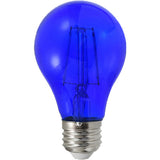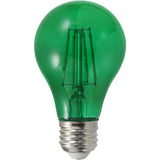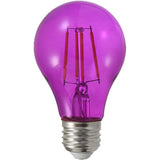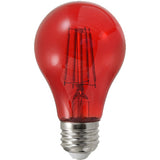How to Use Yellow Bug Lights to Attract Fewer Insects
Posted by Nick on for ProLampSales
With the change to Daily Savings Time, the switch to Spring, and the lengthening of the days and more wet weather, it's only a matter of time before bugs will be back in force around your home.
But you don't have to suffer (as much) from creepy crawlies and flying insects when you utilize bug lights, a type of light bulb that has been used for decades to make sitting our your patio a little less aggravating.
How Do They Work?
But lights take advantage of insects' visual systems. Insects can see light higher up on the color temperature scale, so blue and white light attracts bugs. (Incidentally, that's why bug zappers - not to be confused with bug lights - use ultraviolet UVA light to attract more bugs).
However, insects have more difficulty detecting light at the lower end of the spectrum. The more yellow to red the light is, and the more bluish light is filtered out, the fewer bugs you'll have, at least for a while.
Do Bug Lights Work Forever?
While bug lights are a great short-term solution and you'll likely be able to enjoy the outdoors for longer than if you didn't use one, bug lights aren't foolproof.
Once a few insects make their way to your light, other bugs that prey on those initial ones will come to join the party. So you might have fewer bugs, but over time, insects will be attracted to any light. They're just less attracted to yellow bug lights compared to white lights.
What Types of Bug Lights Are Available?
In the past, bug lights were mostly indandescent light bulbs that had a yellow coating applied. But in recent decades, CFL and LED colored lights have taken over the market.
While incandescent bug lights may still be available, they aren't the recommended solution due to their low energy efficiency and the fact that they emit more ultraviolet and infrared. On hot summer nights, incandescent lights can increase the heat since they emit most of their energy as heat, not light.
CFLs are a great alternative, especially in enclosed fixtures. LED life can be compromised by poor heat management, so enclosed fixtures with the base up may work better with CFL bulbs. As heat rises, it could make an LED bulb too hot, shortening life.
Overall, though LED bug lights are probably the best solution if the heat can be dissipated efficiently. LEDs can also be combined with dusk-to-dawn features or motion control, so they only go on when you want. And they emit the least UV and IR wavelengths, making them the most efficient option available.
Where Can You Get Bug Lights?
Bug lights are available online and at local hardware stores that have a decently-large lighting selection. They come in all ranges of wattage and lighting type, and many now offer various other features. But regular old yellow light bulbs are still widely available and reasonably priced.
Can I Use a Different Color?
Yes! Yellow is the most common color marketed as a "bug light," mostly because yellow is close enough to white light to be somewhat comparable. But you could also use an orange or red light bulb, which may do an even better at not attracting bugs.
The main drawback with orange or red bulbs is that hanging out under them may feel a little weird compared to regular white lights. Again, yellow is not as different from white light as red or orange, so may feel a little more natural to have as outdoor lighting.
Should I Get a Bug Light or a Zapper?
I'm glad you asked that question. We've written a whole article comparing bugs lights and zappers. Depending on how you want to deal with the bugs in your area, you might want one or the other, or use a combination.
- Posted in Landscape & Outdoor
Featured Products (View All)
0 Comments




